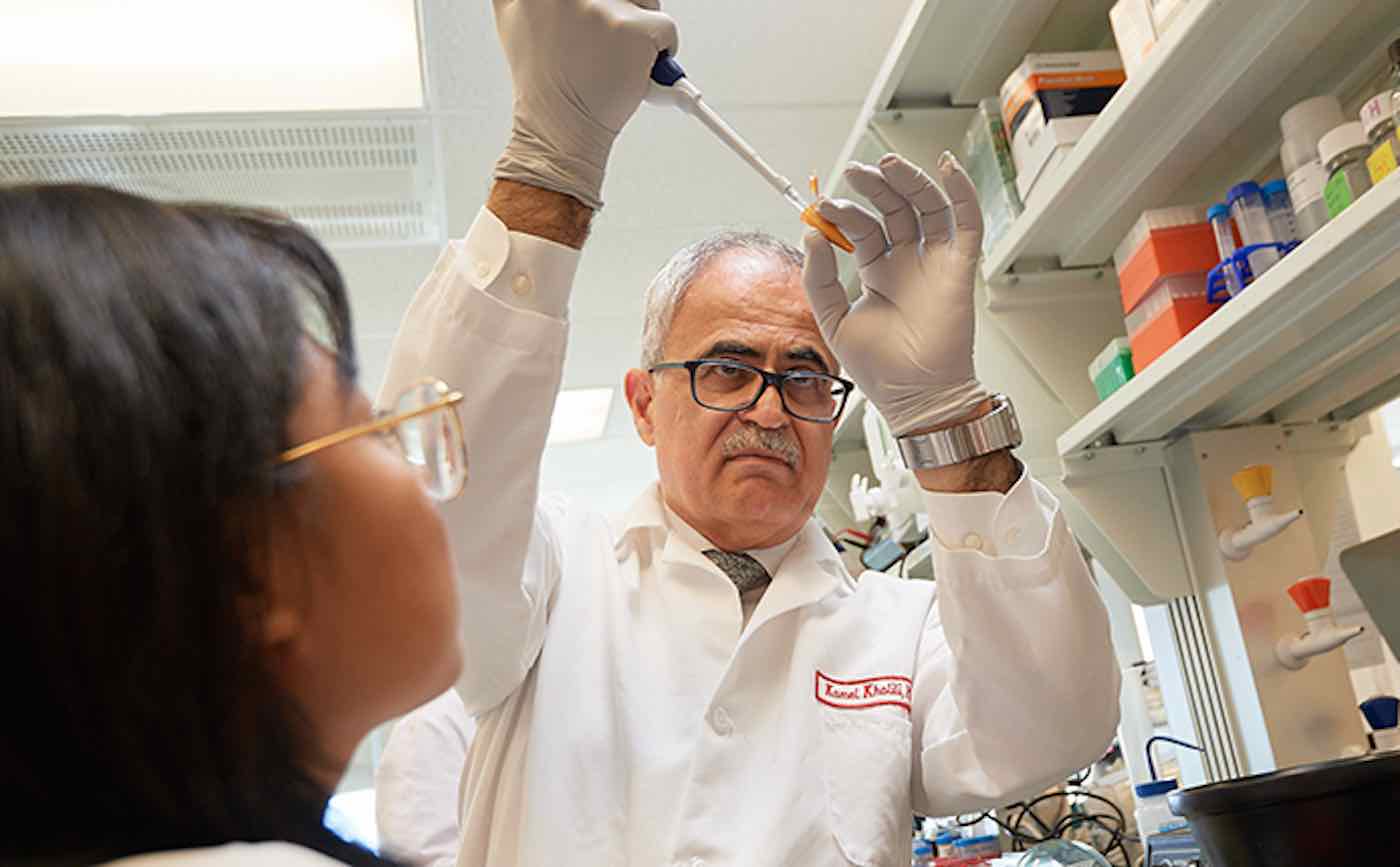In a major collaborative effort, researchers have for the first time ever eliminated all traces of HIV from the genomes of living animals.
The study, which was reported online in the journal Nature Communications this week, marks a critical step toward the development of a possible cure for human HIV infection.
The research was carried out by a team of scientists from the Lewis Katz School of Medicine at Temple University (LKSOM) and the University of Nebraska Medical Center.
“Our study shows that treatment to suppress HIV replication and gene editing therapy, when given sequentially, can eliminate HIV from cells and organs of infected animals,” said Kamel Khalili, Director of the Comprehensive NeuroAIDS Center at LKSOM.
Current HIV treatment focuses on the use of antiretroviral therapy (ART). ART suppresses HIV replication but does not eliminate the virus from the body. Therefore, ART is not a cure for HIV, and it requires life-long use. If it is stopped, HIV rebounds, renewing replication and fueling the development of AIDS. HIV rebound is directly attributed to the ability of the virus to integrate its DNA sequence into the genomes of cells of the immune system, where it lies dormant and beyond the reach of antiretroviral drugs.
In previous work, Dr. Khalili’s team used CRISPR-Cas9 technology to develop a novel gene editing and gene therapy delivery system aimed at removing HIV DNA from genomes harboring the virus. In rats and mice, they showed that the gene editing system could effectively excise large fragments of HIV DNA from infected cells, significantly impacting viral gene expression. Similar to ART, however, gene editing cannot completely eliminate HIV on its own.
For the new study, Dr. Khalili and colleagues combined their gene editing system with a recently developed therapeutic strategy known as long-acting slow-effective release (LASER) ART.
CHECK OUT: Dogs Detecting Lung Cancer With 97% Accuracy May Spell the End of Expensive Screening Methods
LASER ART targets viral sanctuaries and maintains HIV replication at low levels for extended periods of time, reducing the frequency of ART administration. The long-lasting medications were made possible by pharmacological changes in the chemical structure of the antiretroviral drugs. The modified drug was packaged into nanocrystals, which readily distribute to tissues where HIV is likely to be lying dormant. From there, the nanocrystals, stored within cells for weeks, slowly release the drug.
“We wanted to see whether LASER ART could suppress HIV replication long enough for CRISPR-Cas9 to completely rid cells of viral DNA,” said Khalili.
RELATED: Be Sure and Floss! Researchers Say Good Dental Health ‘Substantially’ Decreases Risk of Alzheimer’s
To test their idea, the researchers used mice engineered to produce human T cells susceptible to HIV infection, permitting long-term viral infection and ART-induced latency. Once infection was established, mice were treated with LASER ART and subsequently with CRISPR-Cas9. At the end of the treatment period, mice were examined for viral load. Analyses revealed complete elimination of HIV DNA in about one-third of HIV-infected mice.
“The big message of this work is that it takes both CRISPR-Cas9 and virus suppression through a method such as LASER ART, administered together, to produce a cure for HIV infection,” Dr. Khalili said. “We now have a clear path to move ahead to trials in non-human primates and possibly clinical trials in human patients within the year.”
Reprinted from Temple University
Cure Your Friends Of Negativity By Sharing The Good News To Social Media – Photo by Temple University




















